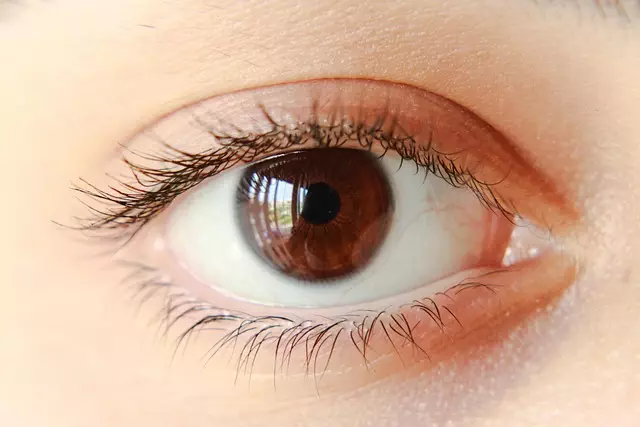Skin Resurfacing Peels are professional exfoliation treatments that enhance skin texture and appearance, using topical solutions to encourage the top layer of skin to peel off. These non-invasive procedures boost collagen production, unclog pores, reduce fine lines and wrinkles, providing a rejuvenated complexion. Peels range from mild to deep, catering to different skin concerns, with gentle peels suitable for beginners or sensitive skin and stronger formulations targeting severe issues like acne scars and sun damage.
Proper preparation and post-care are vital. Before the procedure, cleanse the skin thoroughly and avoid irritating products like retinol. After the peel, use soothing moisturizers, broad-spectrum sunscreen (SPF 30+), rest, stay hydrated, and avoid strenuous activities.
Key benefits include improved texture, reduced wrinkles, and even skin tone. Ingredients like AHAs, BHAs, retinoids, and plant extracts target specific issues. Professional guidance is essential for safety and optimal results, mitigating risks like temporary redness or swelling. Combining peels with laser therapy can enhance outcomes further, and regular at-home care routines maintain skin health between professional treatments.
“Unveil your skin’s radiant potential with professional exfoliation treatments—a game-changing approach to achieving flawless, healthy complexion. This comprehensive guide delves into the world of ‘skin resurfacing peels’, offering a detailed overview for all skin types. From understanding the science behind exfoliation’s profound benefits to exploring various peel types and essential preparation tips, we’ve got you covered. Discover how these professional treatments can transform your skin, enhance results with complementary skincare services, and unlock long-lasting radiance through proper post-care rituals.”
Understanding Skin Resurfacing Peels: A Comprehensive Overview

Skin Resurfacing Peels, also known as chemical peels, are a professional exfoliation treatment designed to improve skin texture and appearance. This non-invasive procedure involves applying a topical solution with varying levels of strength to the skin, encouraging the top layer to peel off and revealing smoother, more radiant skin beneath. The process stimulates collagen production, unclogs pores, and reduces fine lines and wrinkles, providing a rejuvenated complexion.
These peels range from mild to deep, each offering unique benefits tailored to different skin concerns. Gentle peels are ideal for initial treatments or sensitive skin, while stronger formulations target severe acne scars, hyperpigmentation, and sun damage. Professional applications ensure optimal results and minimize risks associated with at-home products, making Skin Resurfacing Peels a popular choice for those seeking a transformative skincare experience.
The Science Behind Exfoliation and Its Benefits

Exfoliation is a skincare process that involves removing dead skin cells from the surface to reveal healthier, smoother skin below. The science behind this treatment lies in its ability to accelerate cell turnover, which is the natural process where old cells make way for new ones. Professional exfoliation treatments, such as Skin Resurfacing Peels, take this process to the next level by using specialized chemicals or mechanical tools to gently slough away damaged skin.
Benefits of regular exfoliation include improved skin texture, reduced appearance of fine lines and wrinkles, enhanced product absorption, and a more even complexion. By removing the top layer of dead skin cells, these treatments allow for better penetration of moisturizers, serums, and other topical products, leading to boosted skincare routines. Furthermore, exfoliation can help unclog pores, reducing the risk of acne and congestions, resulting in a clearer and healthier-looking skin.
Types of Professional Skin Resurfacing Treatments

Professional skin resurfacing treatments offer a range of options for achieving smoother, more even-toned skin. One of the most popular and effective methods is chemical peels, which involve applying chemicals to the skin to lift away dead skin cells, stimulating new cell growth, and improving texture. These peels vary in strength, from gentle exfoliants to strong formulations that target specific concerns like acne scars or fine lines.
Another type of professional skin resurfacing treatment is microdermabrasion, a non-invasive procedure that uses a special instrument with small crystals to gently sand away the upper layer of skin. This process helps to remove dead skin cells and unclogs pores, leaving the skin feeling smoother and looking brighter. Additionally, laser resurfacing uses lasers to target specific skin issues, such as age spots or scarring, by breaking up damaged tissue and promoting collagen production for a more youthful appearance.
Choosing the Right Peel for Your Skin Type

Choosing the right skin resurfacing peel is essential for achieving optimal results and maintaining healthy skin. Different peels target specific concerns, such as fine lines, acne scars, or uneven skin tone. For instance, alpha hydroxy acids (AHAs) like glycolic acid are suitable for all skin types due to their ability to gently exfoliate and stimulate collagen production. These peels are particularly effective for addressing surface-level imperfections and enhancing skin texture.
On the other hand, beta hydroxy acids (BHAs) like salicylic acid are ideal for oily or acne-prone skin as they penetrate deeper into pores to dissolve excess oil and reduce inflammation. For more severe conditions like hyperpigmentation or deep acne scars, stronger peels like trichloroacetic acid (TCA) or lactic acid can provide dramatic results but require professional supervision due to their potency.
Pre-Treatment Preparation and Post-Care Rituals

Before any exfoliation treatment, proper preparation is key. This involves a thorough cleansing routine to remove makeup, oil, and dirt from the skin. Exfoliation specialists often recommend using gentle, hydrating cleansers a day or two before the procedure to ensure optimal results. Additionally, avoiding certain products like retinol or acid-based treatments for 24–48 hours prior can prevent potential irritation during and after the process. During this time, it’s also crucial to stay hydrated and protect your skin from excessive sun exposure.
Post-care rituals are equally significant for maintaining healthy skin after a Skin Resurfacing Peel. Following the treatment, specialists suggest using soothing moisturizers and avoiding harsh cleansers or exfoliants for a few days. Sun protection is paramount; wearing broad-spectrum sunscreen with at least SPF 30 daily helps prevent hyperpigmentation and promotes healing. Staying hydrated, getting adequate rest, and avoiding strenuous activities also aid in the skin’s recovery process.
Common Ingredients in Skincare Peels

Skin resurfacing peels are a popular skincare treatment, offering a variety of benefits such as improved texture, reduced fine lines and wrinkles, and a more even skin tone. The key to their effectiveness lies in the ingredients used, which can range from chemical compounds to natural extracts. Common ingredients include alpha hydroxy acids (AHAs), beta hydroxy acids (BHAs), and retinoids, each with unique properties that target different skin concerns.
AHAs like glycolic acid and lactic acid are known for their exfoliating properties, removing dead skin cells to reveal smoother, brighter skin. BHAs such as salicylic acid are particularly effective for acne-prone skin as they penetrate pores to dislodge impurities. Retinoids, derivatives of vitamin A, stimulate collagen production, enhancing skin elasticity and reducing the appearance of age spots. Additionally, some peels incorporate plant-based actives like fruit enzymes or herbal extracts for gentle yet powerful exfoliation and skincare benefits.
Safety Considerations and Potential Side Effects

Professional exfoliation treatments, such as skin resurfacing peels, offer numerous benefits for achieving smoother, more radiant skin. However, safety considerations and potential side effects should never be overlooked. These procedures involve removing the top layer of skin to promote new growth, which can lead to temporary redness, swelling, and sensitivity. In some cases, individuals may experience mild discomfort or even bruising.
It’s crucial to choose a qualified professional for your treatment, as they can assess your skin type and condition to recommend the most suitable peel. They will also provide pre- and post-treatment instructions to ensure optimal results while minimising risks. Regular consultations are essential to monitor progress and address any concerns promptly.
Enhancing Results: Combinations with Other Skincare Services

Professional exfoliation treatments, such as skin resurfacing peels, offer exceptional benefits when combined with other skincare services. These powerful procedures can enhance the effects of your regular skincare routine, addressing various skin concerns more effectively. For instance, pairing a chemical peel with a targeted laser treatment can improve texture and reduce fine lines, providing a youthful glow.
Incorporating exfoliation into a comprehensive skincare regimen also allows for better penetration of active ingredients in serums and creams. This synergistic approach ensures that your after-peel treatments work even harder, revitalizing the skin and achieving long-lasting results.
Maintenance and Home Care Routines for Optimal Skin Health

Maintaining optimal skin health goes beyond occasional professional treatments like skin resurfacing peels. Daily at-home care routines play a crucial role in supporting your skin’s natural radiance and longevity. Consistent cleansing, using gentle yet effective products, is fundamental to removing environmental impurities and excess oil that can clog pores and lead to breakouts. Moisturizing is another essential step, as it helps hydrate the skin, maintain its barrier function, and prevent dryness, which can make the skin more susceptible to damage.
For best results, incorporate exfoliation into your home care routine. Exfoliating regularly helps remove dead skin cells, unclogs pores, and promotes cell turnover, resulting in smoother, brighter, and more even-toned skin. Choose a chemical exfoliant that suits your skin type, focusing on ingredients like alpha hydroxy acids (AHAs) or beta hydroxy acids (BHAs) found in many over-the-counter products. Remember, gentle and consistent care at home is key to sustaining the radiant, healthy complexion achieved through professional treatments like skin resurfacing peels.
